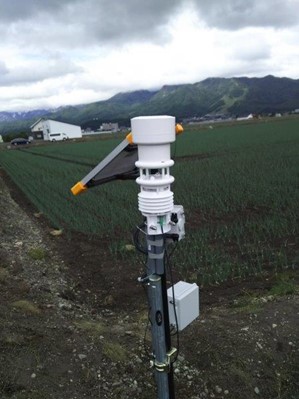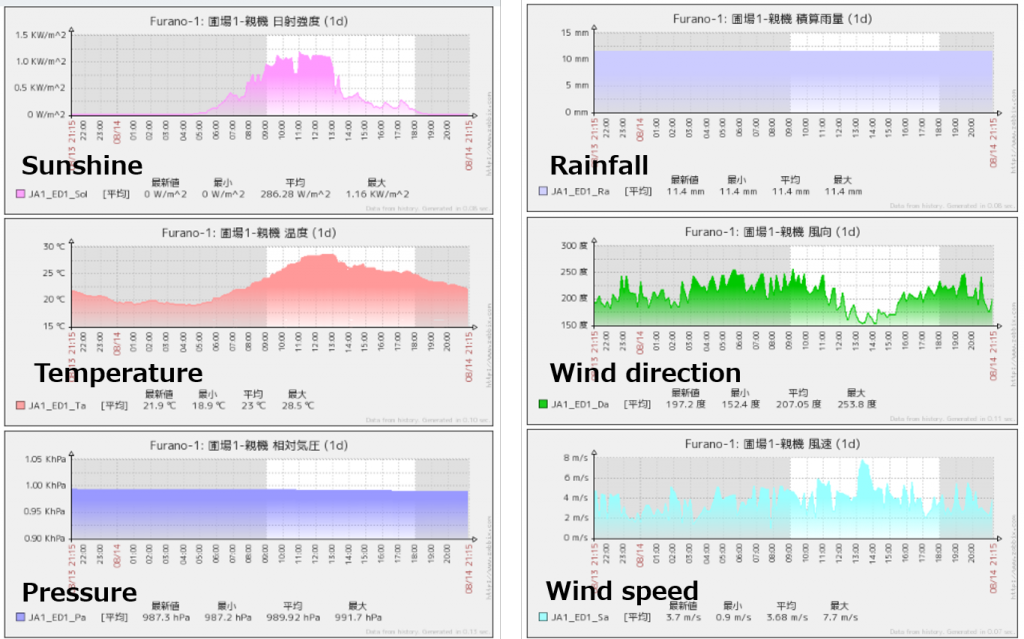Support for solving labor saving in agriculture with IoT

Examples of labor saving in agriculture
We will explain how to help solve the labor saving by utilizing IoT.
CM Engineering Co., Ltd. has a track record of installation at many sites in the field of IoT agriculture. Let’s take an example of using IoT to support farming, where we conducted a demonstration experiment.
Various know-how and knowledge are required for the implementation of agriculture, but we will focus on the following three points that are considered to be troublesome due to labor saving at the agricultural site.
- Understanding the outdoor growing environment
- Understanding the soil environment
- Understanding the conditions of disease occurrence and understanding the timing of pesticide application
Understanding the outdoor growing environment
First, regarding the understanding of the outdoor growth environment, it is possible to remotely grasp the growth environment of the field by monitoring information such as rainfall, solar radiation, temperature, atmospheric pressure, wind direction and wind speed by introducing an IoT system.
Until now, people go to see the growing environment after getting information such as whether it is sunny, cloudy or rainy, cold or hot, windy or weak, etc. from the weather forecast etc.
However, general weather forecasts cover a fairly large area. Therefore, there are quite a lot of cases where the situation of the field you want to check is different from the result of the weather forecast. Weather forecasts are useful for wide-ranging forecasts, but the actual field environment is often only known to people.
Installation of sensors in the field
These challenges can be solved by installing sensors in the field. In other words, by collecting information with sensors, it is possible to grasp the outdoor growing environment in a timely.

The photo above shows a weather sensor installed in an actual field. This photo is an example of using a commonly used weather sensor, but it is not suitable for installation in the field because it is a sensor used for weather forecasting, etc., and it is large and heavy. In addition, since it will be installed in only one place, it is necessary to install many in order to grasp the environment of a large-scale field, so it is not suitable for accurate information grasping.
Solving problems with IoT by downsizing sensor nodes
All of these sensors can be miniaturized, and even today, almost all of them are small.
For example, more accurate information can be obtained by dividing sensors such as temperature / humidity sensor, barometric pressure sensor, wind direction / wind speed sensor, rainfall sensor, and sunshine sensor, and installing miniaturized sensors in the field as sensor nodes. In other words, by building an IoT environment that wirelessly transmits information to the Gateway with a miniaturized sensor, it is possible to grasp the environment of the field from multiple perspectives.
With Tele-Sentient, you can build such an IoT with Sensor Plug and Play, a platform that allows you to easily build an IoT.
Tele-Sentient’s future IoT is to reduce the size of the sensor so that it can be scattered in the field and accurately sense local information. Considering our application cases, even with the same sensing parameters, completely different values can be obtained depending on the region and location. In other words, the realization of IoT for local production for local consumption is considered to be the keyword.
Weather information monitoring example

The graph above shows the results of monitoring weather information in the actual field. This is only seen in the graph, but it is important to support how to interpret this and what kind of action it will lead to. However, by installing a sensor, it is possible to reduce manpower even if it is possible to grasp the field environment remotely.
This time, We have explained that IoT is effective for grasping the outdoor growing environment. Next time, We will explain how to understand the soil environment.
